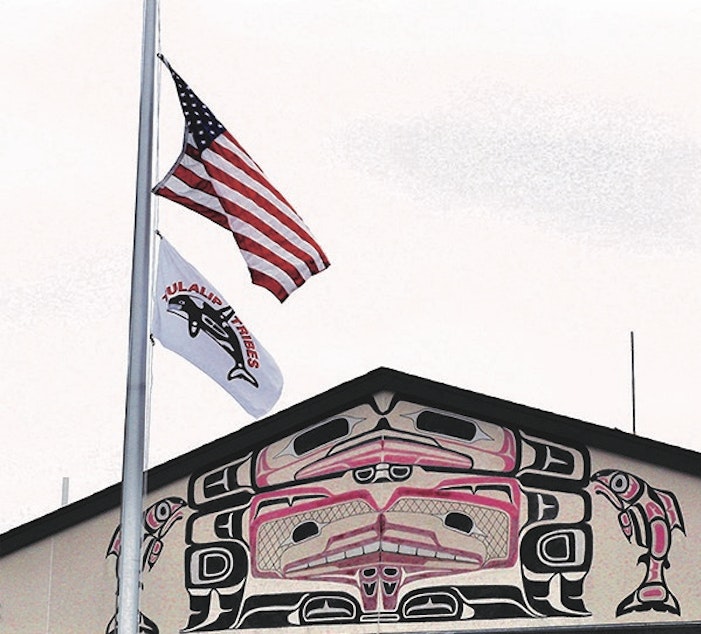Time runs out on harmful Native American names and mascots in WA schools

By the beginning of next year, Native American names and mascots are no longer allowed in public schools across Washington state. In the Marysville School District, Marysville Pilchuck High School is dropping the name Tomahawks, and Totem Middle School will no longer call themselves Thunderbirds.
Dr. Stephanie Fryberg has studied the harms that come from Native American mascots and imagery. She's a professor in the Department of Psychology at the University of Michigan. She's also a Tulalip tribal member. She talked to KUOW’s Kim Malcolm about the changes.
This interview has been edited for clarity.
Kim Malcolm: You've been researching this issue for some time, and also living it. I'm wondering how you're feeling about this change at the very school district that serves so many Tulalip students.
Stephanie Fryberg: I'm really happy to see the change. I think when we think about education, and what education is supposed to do for children, it's about giving them opportunities to have a good life and to be successful. We know that these mascots undermine those opportunities for Native students, so on some level it's about time.
What's the psychological impact of schools using these images and names and symbols?
There's more than two decades of research that demonstrates that these mascots decrease indigenous youth’s self-esteem, community worth, their academic aspirations. It increases stress, and depression, and suicidal ideation among indigenous people more generally. It also has an impact on cultural connection for indigenous people such that they feel more disconnected in those spaces from who they are as Native people. Really, there's no psychological benefits for indigenous youth that are associated with having indigenous themed mascots.
Sponsored
And what kind of signals do they send to non-Native people?
What the literature tells us is that these mascots lead people to discriminate against indigenous people. They're more likely to stereotype us as aggressive, as savages, or as primitive. They portray us as relics of the past, and obscure the existence of what is now 5.2 million contemporary indigenous people.
We find that these mascots, and game day rituals like the tomahawk chop, fuel apathy, and a lack of accountability on the part of other Americans to acknowledge or address the many injustices that indigenous people continue to face in the U.S., such as disproportionate police violence, lack of access to clean drinking water, under-funded educational and health care systems.
The Tulalip tribe’s flag, with that instantly recognizable Orca, is now going to fly at every school campus in the Marysville district. You're a member of the Tulalip tribe. What does that mean to you?
I think it's an important acknowledgement of our sovereignty as a nation, and that nation to nation relationship that we have with the federal government. That flag, it's important. It really symbolizes for our children that they belong here, and that the only way that we're visible is not simply as a mascot, but really, that they see us as contemporary people. They’re recognizing our people, our nation, our ancestors. It's very important.
Sponsored
Listen to the interview by clicking the play button above.





